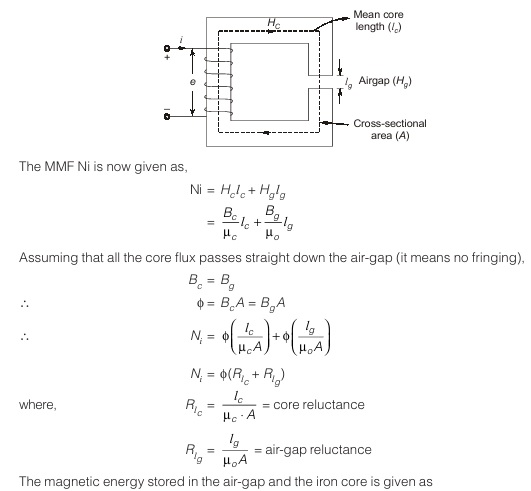Core with Air-Gap
A typical magnetic circuit with an air-gap is shown below in the figure. It is assumed that the air-gap is narrow and the flux coming out of the core passes straightly through the air-gap, such that the flux density in the air-gap is the same as in the core and core permeability µ is regarded as constant (linear magnetization). But in reality the flux in the air-gap fringes out so that the air-gap flux density is somewhat less that of the core (fringing effect).


Fringing
At an air-gap in a magnetic core, the flux fringes out into neighbouring paths as shown in figure. The result is non-uniform flux density in the air-gap, enlargement of the effective air-gap area and a decrease in the average air-gap flux density.
If area of air-gap increases, then total area of core with consideration of air gap increases. Then average flux density gets reduced. It is possible to partially offset these inherent sources of error by using a “corrected” or “effective” mean path length and the cross-sectional area instead of actual physical length and area in the calculations. Satisfactory results may be achieved with this approximate method

